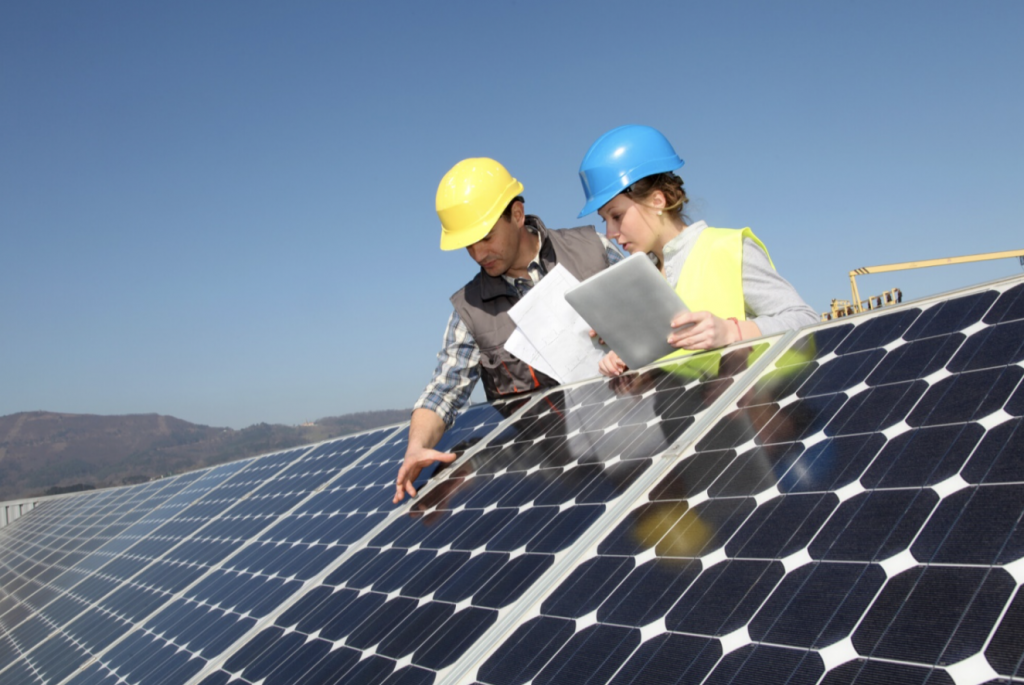
Around 4% of U.S. homeowners have solar panels installed. Making the switch to renewable energy can help you reduce your carbon footprint, and you can take advantage of some sweet government incentives.
Before you call a solar panel installation company, it’s a good idea to familiarize yourself with your options.
There are around eight different types of solar panels that you can choose from. They all come with their pros and cons and price points.
The most expensive panels are monocrystalline but are also the most energy efficient. Thin-film solar cells are cheaper, but they take up a lot of room. Check out this guide to learn more.
What Are Solar Panels?
Before we go over the different types of solar panels, we’ll talk a little about what they are and what they do.
Solar panels absorb the sun’s energy and convert it into the electricity you need to power your home. Most panels are made up of several solar cells. These cells are a sandwich made of boron, silicon, and phosphorus.
Boron is the top piece of bread. It creates a positive charge. Phosphorus is the meat in the middle of the sandwich. It acts as a semiconductor for the other two layers.
Phosphorus is the bottom piece of bread. It holds a negative charge.
When the sun’s rays hit the panel, it removes the electrons created by the sandwich and pushes them into the cell’s electronic field.
Monocrystalline
The first type of solar panel is monocrystalline. As stated above, it’s the most expensive option you’ll come across, but it’s also the most energy efficient.
They put out a lot of power and don’t take up a lot of room. This makes them an ideal fit for residential rooftops.
Out of all the panels on the market, monocrystalline lasts the longest. This is because they’re not too fussed about high temperatures. This means you won’t have to worry about replacement or repairs for a long while.
Due to being made with pure silicon, monocrystalline panels are dark in color. You can also recognize them by their rounded edges.
Passivated Emitter and Rear Cell
If you want to enjoy solar panel efficiency from monocrystalline without the price tag, passivated emitter, and rear cell panels have you covered.
They’re still relatively new to the market and are seen as an improved version of monocrystalline panels. They incorporate a passivation layer to the rear of the cell.
This extra layer reflects sunlight into the cell, increasing the solar energy the panel can absorb. Like monocrystalline panels, these don’t take up much roof real estate.
Polycrystalline
The main reason why monocrystalline panels are so expensive is the amount of waste. About half of the silicon used in production is wasted. Polycrystalline panels don’t have that problem.
The silicon is melted down and poured into square molds. The process is fast, cheap and gives the panels their unique shape.
The problem is that this production method makes them less energy-efficient than monocrystalline panels. They’re also not as durable. They’re highly affected by hot temperatures, which gives them a shorter lifespan.
Thin-Film Solar Cells
When comparing solar panel costs, you’ll find that thin-film solar cells are the cheapest. This is because they’re so simple to produce. All manufacturers must do is place a few layers of silicon or copper onto a substrate.
Thin-film solar panels are both impervious to heat and flexible, but they take up a lot of room. So unless you have a large roof, you may not be able to use them.
These panels also come with a shorter warranty. Unfortunately, you may pay for repairs out of your pocket if something goes wrong.
Amorphous Silicon Solar Cell
Amorphous silicon solar cell panels take half as much silicon to make as the other type of panels on this list. Due to this, they’re inexpensive to produce, but they’re not efficient.
You don’t see many solar system installs that use amorphous silicon solar cells. This is because they’re more appropriate for powering pocket calculators than homes.
Concentrated PV Cell
Concentrated PV cell panels use curved mirrors and cooling systems to capture and hold the sun’s rays. This makes them much more efficient than other photovoltaic systems.
The only drawback is that they can only reach that level of efficiency if facing the right angle. Some concentrated PV cell systems have a solar tracker installed to help them achieve this.
Cadmium Telluride Solar Cell
Cadmium telluride solar cells are some of the cheapest on the market. You’ll still need to look for financing options, but the payback time won’t be long.
The issue is that the cadmium telluride used in producing these panels is dangerous if inhaled or ingested.
Copper Indium Gallium Selenide
These panels are created by pouring thin layers of copper, indium, gallium, and selenide onto a glass backing.
As far as thin panels go, these are energy efficient, but they still don’t hold a candle to the silicone crystalline ones.
The Types of Solar Panels Explained
Installing one of the many types of solar panels will help you reduce your carbon footprint and save money on your power bill. But, of course, some panels do a better job of this than others.
We hope you can use the information you’ve read here today to choose the right option for your home. For more tips that will help you conserve energy and go green, visit the Lifestyle section of our blog.











